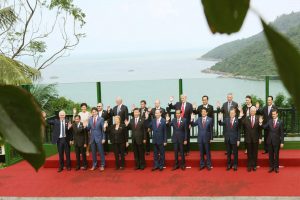Remittances to developing countries to exceed $ 436 billion

Washington : International migrants from developing countries are expected to send $436 billion in remittances to their home countries this year, despite more deportations from some host countries, says the World Bank’s latest issue of the Migration and Development Brief.
This year’s remittance flows to developing countries will be an increase of 7.8 percent over the 2013 volume of $404 billion, rising to $516 billion in 2016, according to revised projections from the latest issue of the brief. Global remittances, including those to high-income countries, are estimated at $581 billion this year, from $542 billion in 2013, rising to $681 billion in 2016.
Remittances remain a key source of external resource flows for developing countries, far exceeding official development assistance and more stable than private debt and portfolio equity flows. For many developing countries, remittances are an important source of foreign exchange, surpassing earnings from major exports, and covering a substantial portion of imports.
In Nepal, remittances are nearly double the country’s revenues from exports of goods and services, while in Sri Lanka and the Philippines, they are over 50 per cent and 38 percent, respectively. In India, remittances during 2013 were $70 billion, more than the $65 billion earned from the country’s flagship software services exports. In Uganda, remittances are double the country’s income from its main export of coffee.
“Remittances have become a major component of the balance of payments of nations. India led the chart of remittance flows, receiving $70 billion last year, followed by China with $60 billion and the Philippines with $25 billion. There is no doubt that these flows act as an antidote to poverty and promote prosperity. Remittances and migration data are also barometers of global peace and turmoil and this is what makes World Bank’s KNOMAD initiative to organize, analyze, and make available these data so important,” said Kaushik Basu, Senior Vice President and Chief Economist of the World Bank.
The brief notes that while the medium term outlook for remittances is strong, downside risks loom mainly from migrants’ return to their home countries as a result of conflict or deportation from host countries. Last year saw an intensification of deportations, with more than 370,000 migrants sent back to their home countries from Saudi Arabia alone in the five months since November 2013. Many of these migrants were from Ethiopia, Egypt and Yemen. In the US, over 368,000 people (mostly migrants seeking entry into the US and apprehended at the border) were deported to their home countries in Latin America and the Caribbean (LAC), particularly Mexico, El Salvador, Guatemala and Honduras.
In addition, asylum-seekers have surged, as a result of strife and conflict. According to a recent report by the United Nations High Commissioner for Refugees (UNHCR), asylum claims in 44 industrialized countries reached 612,700 in 2013, a 28 percent increase over 2012, and the second highest level in the past 20 years. In Europe, the number of asylum applications rose by 32 percent to 484,560 in 2013, with Germany the largest recipient of asylum requests (109,600). The vast majority of asylum applicants are from Syria, Russia, Serbia and Kosovo.
This trend is accompanied by a rise in anti-immigration sentiment, which appears to be gaining momentum in several European countries, including France, Germany, and the United Kingdom. In Switzerland, a referendum held in February 2014 on imposing immigration quotas passed, albeit with a slim majority.
During 2013, remittance flows were generally robust in all regions except LAC, and the Middle East and North Africa (MENA), where the two largest remittance-recipient countries, Mexico and Egypt, saw declines in remittance inflows, due in part to removals and deportations from the US and Saudi Arabia, respectively. However, both countries retained their rankings in the top 10 remittance-receiving countries globally.
India remained in the top spot, with $70 billion in remittances in 2013. Other large recipients were China ($60 billion), the Philippines ($25 billion), Mexico ($22 billion), Nigeria ($21 billion), Egypt ($17 billion), Pakistan ($15 billion), Bangladesh ($14 billion), Vietnam ($11 billion) and Ukraine ($10 billion).
In terms of remittances as a share of GDP, the top recipients were Tajikistan (52 percent), Kyrgyz Republic (31 percent), Nepal and Moldova (both 25 percent), Samoa and Lesotho (both 23 percent), Armenia and Haiti (both 21 percent), Liberia (20 percent) and Kosovo (17 percent).
Nigeria is readying a diaspora bond issue to mobilize diaspora savings and boost financing for development.
Continued efforts are required to lower the cost of sending money through official channels, although inroads are being made. During the first quarter, the global average cost for sending money fell to 8.4 percent of the transaction value, compared with 9.1 percent a year earlier. However, the average cost of remittances to Sub-Saharan Africa has remained stubbornly high at around 12 percent. Also, South-South remittances, which are on the rise, are in many cases either not permitted or very costly due to outward exchange controls in many developing countries, such as Gambia, Ghana and Venezuela.
The closure of bank accounts of money transfer operators serving Somalia and other fragile countries is also worrying, notes the brief. Remittances provide a lifeline to ‘fragile and conflict-affected situations’ where they are more than 5 times larger than foreign aid, foreign direct investment and other sources of international finance. More needs to be done to ensure that anti-money laundering and combating the financing of terrorism (AML/CFT) regulations do not unduly undermine development objectives and harm the poor.
Remittances to the East Asia and the Pacific (EAP) region are estimated to have risen by 4.8 percent in 2013 to reach $112 billion, with Thailand, Vietnam, and the Philippines seeing robust growth. Substantial movement of people continues within the region, driven in large part by persistent disparities in opportunities and incomes. While low-skilled workers account for the majority of migration, the need for high-skilled workers is growing in the region. With free mobility of high skilled workers within ASEAN countries expected to be introduced in 2015, remittance flows are forecast to exceed $148 billion by 2016.
In Europe and Central Asia (ECA), remittances rebounded from the slowdown in 2012, expanding by 10 percent in 2013 to reach $43 billion. Firm oil prices through 2013 helped fuel Russia’s economy, which is the largest source of remittances sent to the other countries in the region. The crisis in Ukraine has precipitated a substantial depreciation of the ruble so far in 2014, and brings substantial uncertainty to projections through 2016.
Remittance flows to countries in the Latin America and the Caribbean (LAC) region grew slightly by 1.9 percent in 2013 to reach $61 billion. Following a 13-month decline, remittance flows to the region began recovering in the second half of 2013. However, remittances to Mexico, the largest remittance-recipient country in the region, contracted in 2013. The positive impetus from the US economic recovery was partly offset by removals of migrants from the US. The economic slowdown and unemployment in Spain and Italy, which are also large destinations of Latin American migrants, contributed to the slowdown in remittances to the region. In the medium term, improving employment conditions in the US point to stronger growth in remittances, which are expected to reach $81 billion by 2016.
In the Middle East and North Africa (MENA) region, remittances are estimated to have fallen by 2 percent in 2013, as a drop in remittances to Egypt more than offset modest growth in the rest of the region. Despite oil prices remaining firm and underpinning the economies of the Gulf Cooperation Council (GCC) countries, departures and deportations from Saudi Arabia and other disruptions are hurting remittance flows. About 300,000 migrants returned to Egypt from Saudi Arabia in the second half of 2013, precipitated by a sharpened labor inspection campaign and set amnesty period. In addition, since November 2013, the Government of Saudi Arabia has deported over 370,000 migrants, mainly nationals of Bangladesh, Ethiopia, Egypt and Yemen. The refugee crisis in Syria continues in staggering proportions. More than 2.5 million Syrians (11 percent of the population) are now living in neighboring countries, with over 1 million in Lebanon alone. Remittance flows to the region are expected to increase modestly to $55 billion in 2016.
According to World Bank , growth in remittances to the South Asia region has slowed, rising by a modest 2.3 percent to $111 billion in 2013, compared with an average annual increase of more than 13 percent during the previous three years. The slowdown was driven by a marginal increase in India of 1.7 percent in 2013, and a decline in Bangladesh of 2.4 percent. The depreciation of the Indian rupee during 2013 appears to have attracted inflows through a surge in the deposits of non-resident Indians rather than remittances.
In Bangladesh, the fall in remittances stems from a combination of factors, including fewer migrants finding jobs in the GCC countries, more migrants returning from GCC countries due to departures and deportations, and the appreciation of the Bangladeshi taka against the US dollar. Still, some rebound is projected in the coming years, with remittances across the region forecast to grow to $136 billion in 2016.
April 12, 2014












